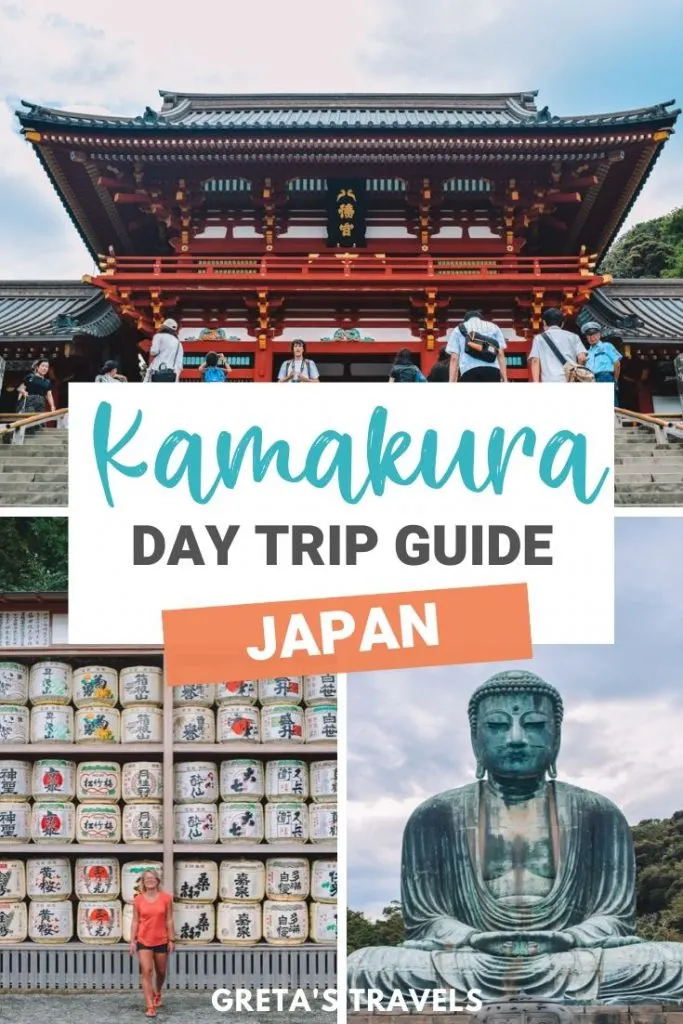Imagine an idyllic, seaside city, teeming with ancient Buddhist temples, a tranquil atmosphere, gorgeous beaches and plenty of resorts. A stunning destination nestled within the coastline, just south of Tokyo.
It’s found in the medieval centre of Japan and comes with a deeply storied past, reflected through its architecture and traditions.
For those exploring the sights and sounds of metropolitan Tokyo, breaking away to visit Kamakura is an absolute must.
It provides a way for you to soak in the wonders of this charming, spiritual and historic destination. It is a must-see Japanese city, with so much to offer every kind of traveller.
Its places like these that make me grateful I left the corporate world to see more of the world. With over 100 temples and shrines, it can be hard to know where to begin.
I’ve put togeher this guide to help you make the most out of a day trip to Kamakura. I went there recently during my 2-week Japan trip as a day trip from Tokyo and have compiled all the best things to see and do in Kamakura.
Here’s everything you need to know to have the perfect 24 hours in Kamakura, Japan!
Contents
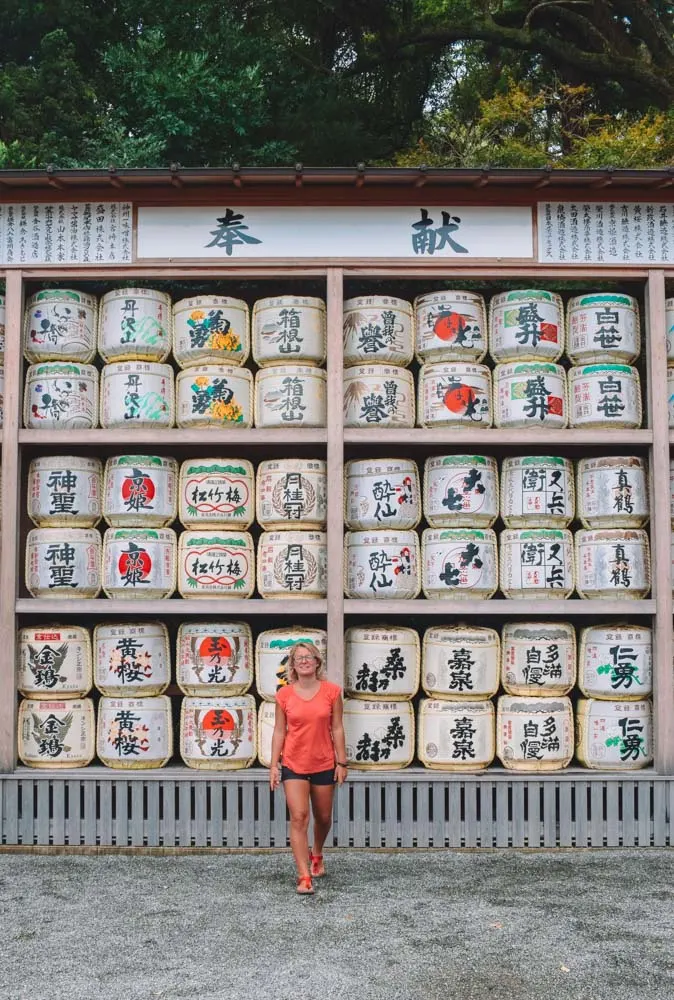
Exploring Tsurugaoka Hachiman-gu Temple in Kamakura
Getting from Tokyo to Kamakura by train
The easiest way to get from Tokyo to Kamakura is by train. Although you can take a series of boats, buses or taxis, the fastest, cheapest and simplest way of getting to Kamakura from Tokyo is via the train system.
This way, getting to Kamakura is a journey full of wonderful sightseeing opportunities, as well as true Japanese public train experience!.
If you’re staying in either Shinjuku or Shibuya, then a direct train with the JS Shonan-Shinjuku Line (¥920) is the best way to get to Kamakura.
When considering how to get to Kamakura, your other options include catching the JR Yokosuka Line train from Tokyo Station (¥920) or Shinagawa Station (¥720). If you have the Japan Rail Pass, this journey will be included in the pass.
All of these train rides include scenic views of Japan as you travel from Kamakura to Tokyo. The journey lasts just over one hour, making it wonderfully quick and convenient.
Click here to purchase your Japan Rail Pass!
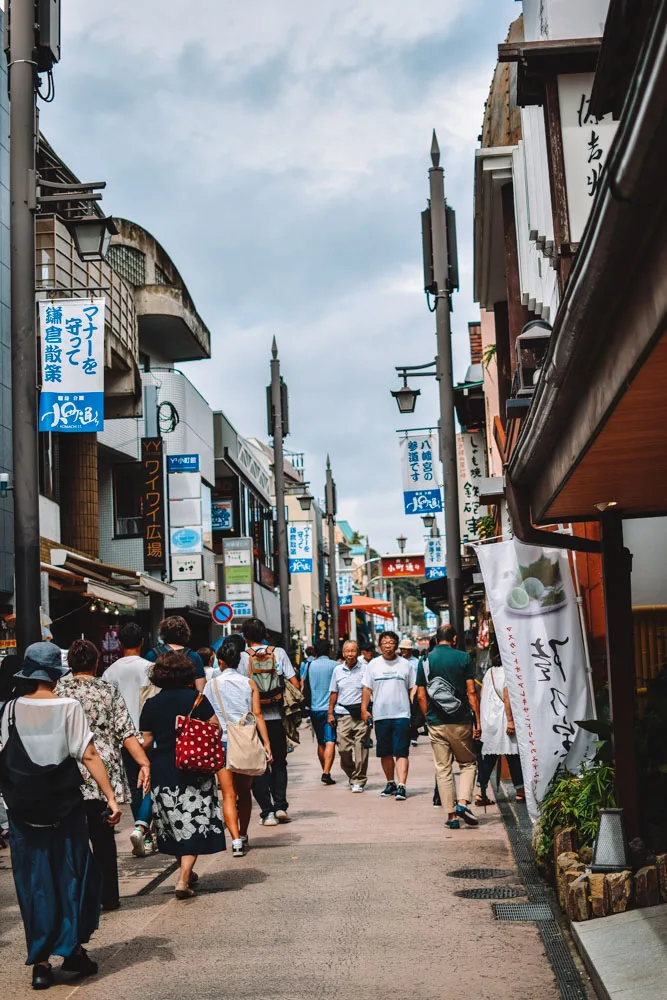
Komachi Street, the main shopping and street food street in Kamakura
Day Trip Itinerary for Kamakura, Japan
After being here and falling in love with Japan, I have learnt the best ways to navigate this breathtaking coastal landmark.
Learn how to capture the beauty of the city, with stops at the many temples, gardens and of course, the Kotoku-in Temple’s Great Buddha.
This itinerary will cover what to do in Kamakura to have the ultimate day trip.
Stop 1: Engakuji Temple
Entrance fee: ¥400 for adults and ¥100 for children
Daily opening hours: 8:00 am – 16:30 pm (March to November) and 8:00 – 16:00 (December to February)
Kamakura is well known for its magnificent temples, some sharing insight into the history of Buddhism and its influence on Japanese culture.
The Engakuji Temple is one of the most significant, old and exquisite temples to be encountered on your Kamakura day trip, and it is the perfect first stop.
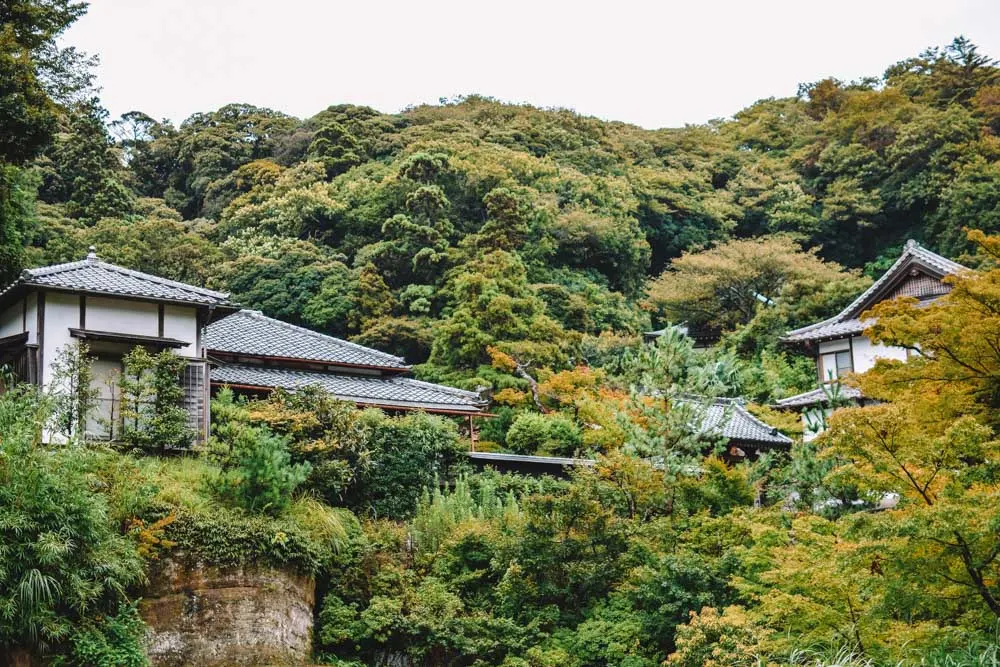
Exploring the gardens of Engakuji temple
Introduce yourself to the magical architecture of the city, and immerse yourself head-first into the mystifying essence of its history. The prominent zen temple was first founded in the 13th-century by a Japanese regent named Hojo Tokimune.
Over the years, it gained more popularity and by the 19th century, it had become one of the most revered temples in Kamakura.
This massive, beautiful and intricately designed temple has mesmerizing, finely-carved details that showcase the talent of early Japanese architecture.
Some of the highlights of the temple include its impressive Sanmon Gate with its intricate wooden carvings and authentic Japanese details.

Exploring Engakuji temple close to Kamakura
You can also see the Butsudan where you’ll find an extraordinary wooden statue of the Shaka Buddha and go for a walk to the bell tower (which has been dubbed a National Treasure) in the exquisitely landscaped garden.
Stroll around this temple and allow yourself to bask in the unique features and characteristics of one of the most fascinating Kamakura attractions.
We wandered around alone but in hindsight it would have been more fun to ask for a guide or as part of a tour, as it would have allowed us to learn a bit of the beautiful places we were seeing.
Tip: If you’re wanting to start your day off with a sip of authentic Japanese green tea, then I suggest that you stop off at the tea garden. It’s situated near the bell tower, within the serene temple gardens.
Click here to go on a Shrines and Temples Walking Tour in Kamakura
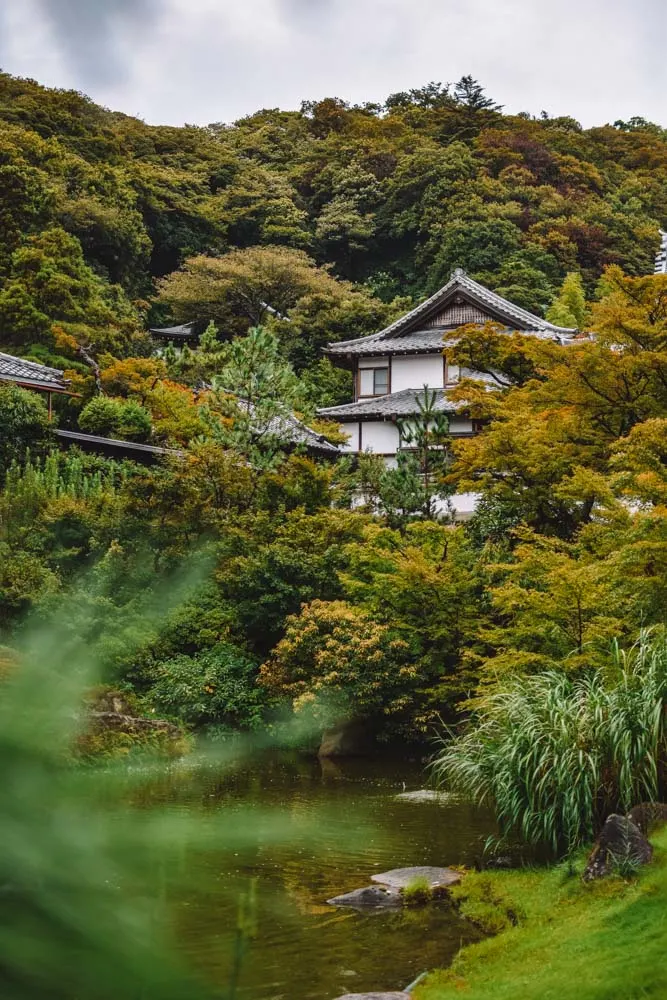
Exploring Engakuji temple close to Kamakura
Stop 2: Komachi Street
Entrance fee: Free
Daily opening hours: 24/7
Next, make your way to the JR Kamakura Station. You can catch a direct train here and then take the east exit. After a short walk, you’ll see a large, eye-catching red gate that marks the entrance.
As you enter, you’ll encounter the ever-bustling Komachi Street, also known as Komachi Dori. This street is a charming place to visit to get a feel for life within this ornate, historic Japanese city.
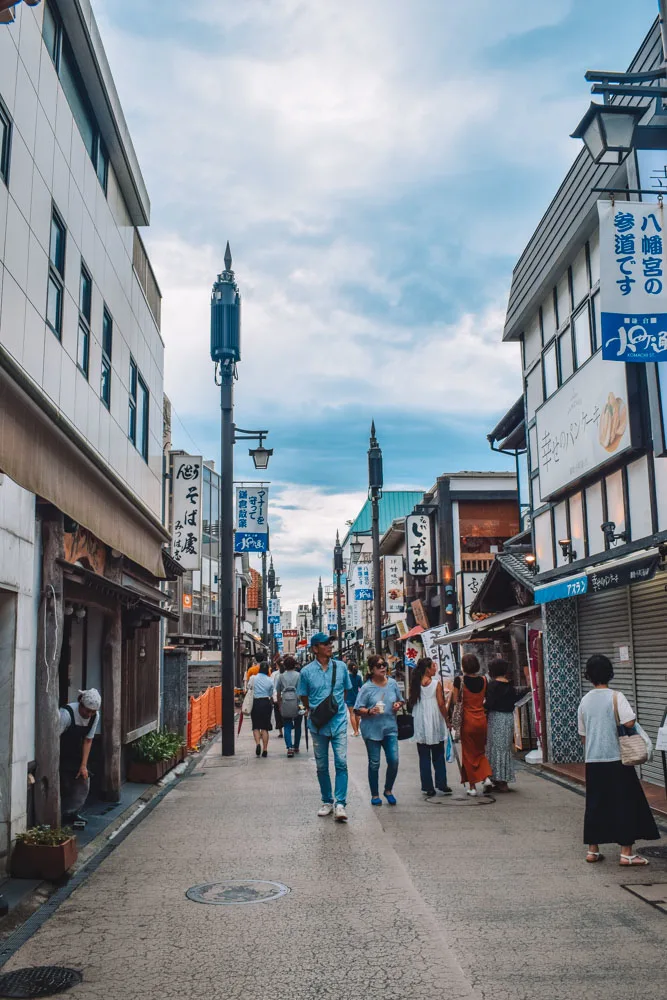
Komachi Street in Kamakura
While you’re on this street, explore the many cool shops and taste some of the best Asian street food, such as Japanese sweets and snacks, such as Tempura Karari and Dango Skewers.
The shops have everything under the sun, and you’re bound to find something beautiful in every one of them.
This is one of the most enjoyable ways to spend your morning. You can enjoy a mouthwatering meal at one of the traditional restaurants, or stick to sampling the many types of scrumptious street foods.
The relaxed atmosphere of Komachi Street showcases the surprisingly easy-going nature of this political centre. Known as Kamakura’s best shopping street, this is the perfect spot to enjoy a few hours of retail therapy.
Find places with authentic and beautiful souvenirs, such as Japanese knives, kimonos and other amazing odds and ends. There are even a few art galleries that exhibit inspiring local artworks.

Enjoying beef buns and other tasty street food from the stalls in Komachi Street in Kamakura
Stop 3: Tsurugaoka Hachiman-gu Temple
Entrance fee: Free (excluding the garden and Shrine Museum)
Daily opening hours: 5:00 am – 21:00 pm (opens at 6:00 am between October to March) Gardens only open in spring.
Right at the end of Komachi Street, you’ll find the prominent Tsurugaoka Hachiman-gu Temple. This sacred site is revered as the most important Shinto shrine in the whole of Kamakura and is an absolute must-see.
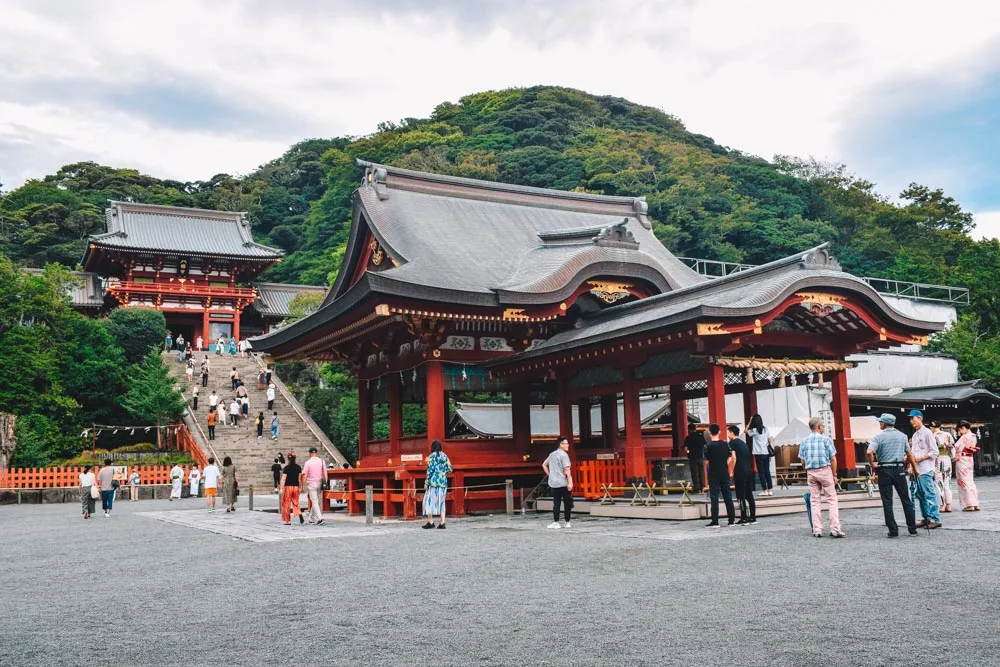
Arriving at Tsurugaoka Hachiman-gu Temple in Kamakura
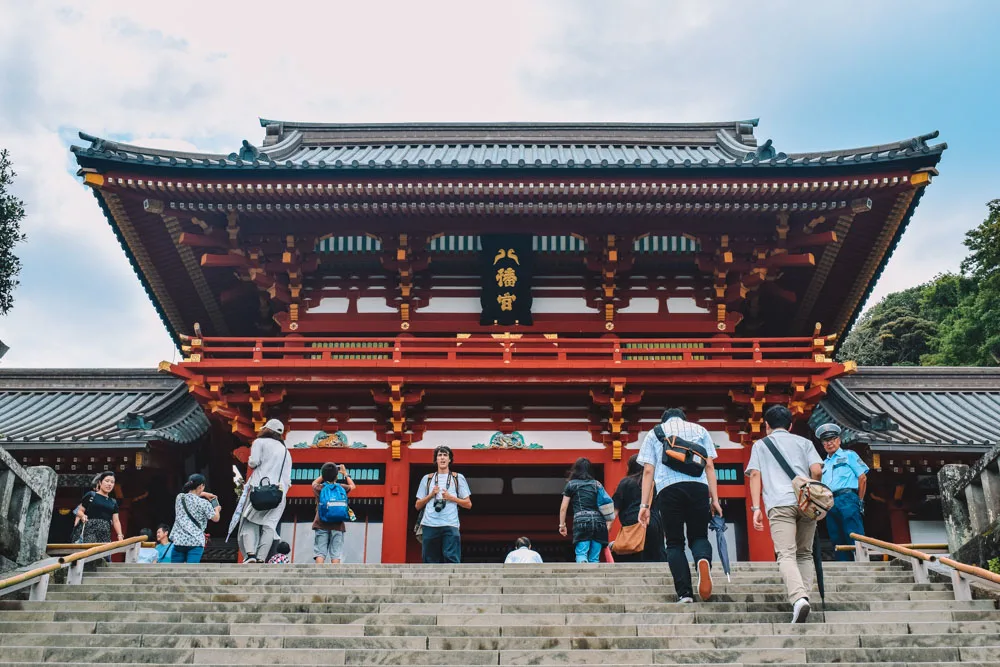
The main temple building of Tsurugaoka Hachiman-gu Temple in Kamakura
This ancient temple has been around since 1180. It carries a magnificent history and stands with spiritual significance for the locals. It is a sacred shrine for Hachiman, a Japanese patron god of Minamoto family and of the samurai.
From the moment you lay eyes on the shrine, you’ll be blown away. The bright red colour and intricate designs make for quite the sight.
Make your way to the terrace of stairs that lead up to the magnificent main hall (also known as the Hongu or Jogu).
Here, you will find a stunning, yet small, shrine museum, which has a ¥200 yen entrance fee. You can see artefacts and treasures owned by the shine on display, such as traditional Japanese masks, swords and ancient documents.
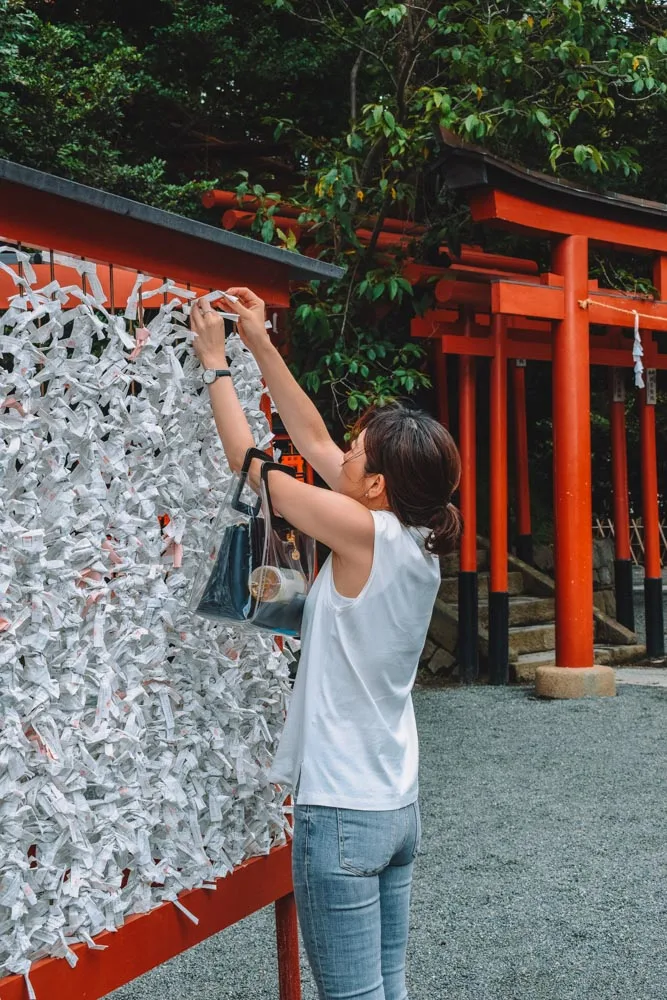
Tying wishes and offerings at Tsurugaoka Hachiman-gu Temple in Kamakura
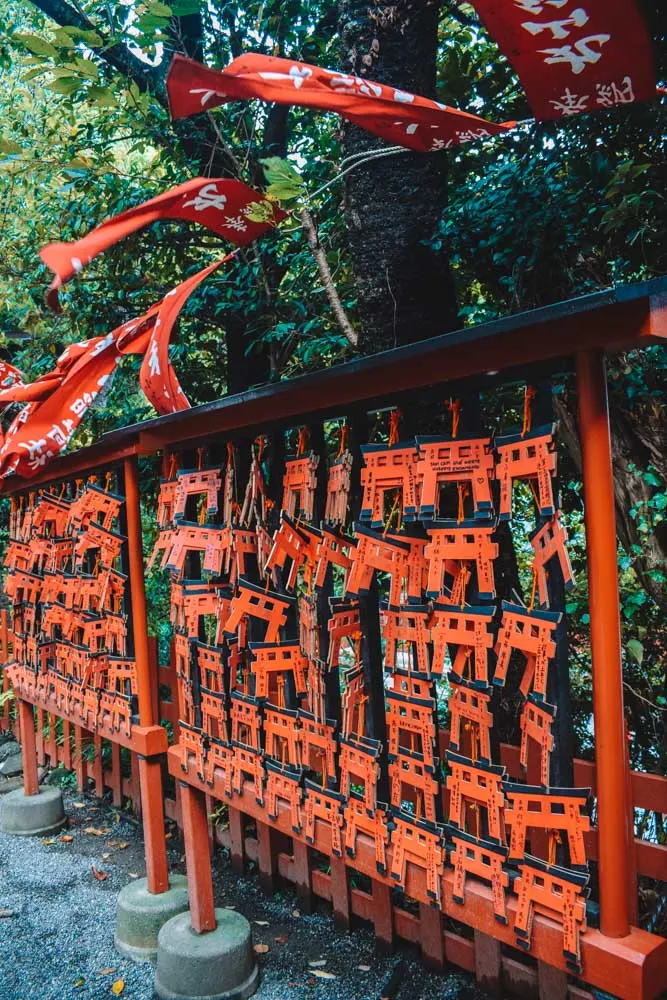
Some of the torii shaped wishes that visitors hang up at Tsurugaoka Hachiman-gu Temple in Kamakura
Afterwards, head back down the stairs and admire the music and dance performance stage, known as the Maiden. You may even be lucky enough to visit on a day when there is a show going on.
Allowing you the chance to enjoy a truly magical performance during your Kamakura trip.
You can also enjoy a secondary shrine to the right of the stairs, the Wakamiya Shrine, found amongst a variety of charming auxiliary buildings.
Finally, take a walk to the enchanting shrine ponds. There are two significant, multi-island ponds onsite, one representing the Minamoto Clan and other the Taira Clan.
There is also an exquisite garden surrounding the Minamoto Pond, famous for its peonies and diverse, colourful plants. It’s only open in the spring, and the entrance fee is ¥500. It’s well worth a visit if you’re here during that season!
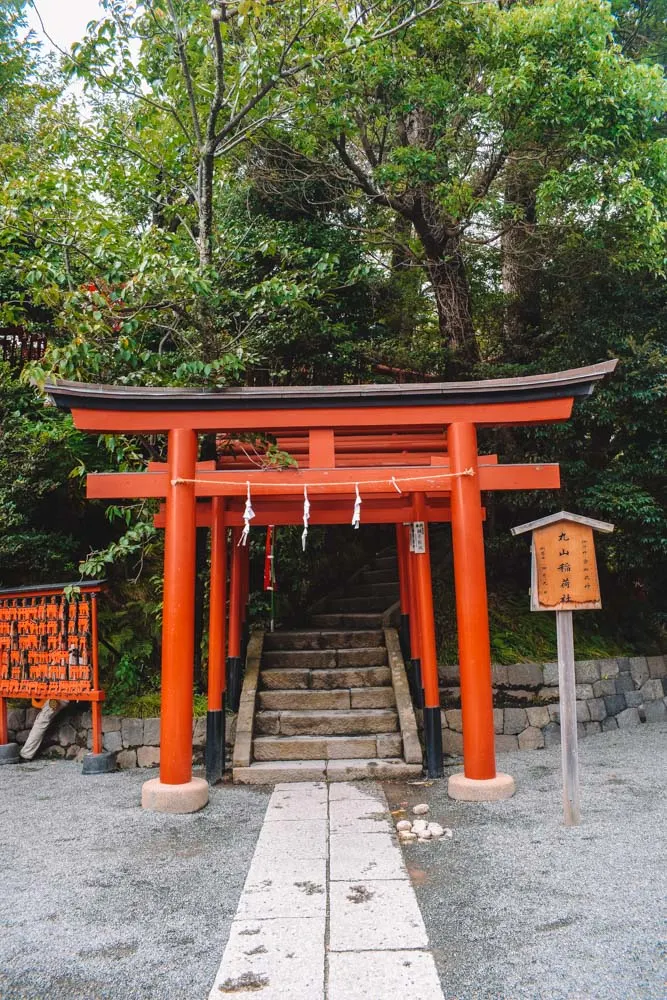
Torii gates at Tsurugaoka Hachiman-gu Temple in Kamakura
Stop 4: Kotoku-in (The Big Buddha of Kamakura)
Entrance fee: ¥300 for adults, ¥150 for elementary school kids and free for children under the age of 6.
Daily opening hours: 8:00 am to 17:30 pm (April to September) and 8:00 am – 17:00 pm (October to March)
Once you’re done seeing the wonders of the Tsurugaoka Hachiman-gu Shrine, jump on a bus and head on to the most famous landmark in Kamakura city, Kotoku-in.
No day trip to this legendary city would be complete without a stop here, as this is the city’s main attraction. Also known as the Great Buddha, this outstanding monument stands as a symbol for Amida Buddha, one of the most revered Japanese icons.
The Great Buddha is seen in a meditation pose, radiating peaceful energy throughout the grounds that is tangible in the air and felt in the soul.
The statue is made out of bronze, and it towers a mighty 13.35 meters, making it the second-tallest bronze Buddha in the whole of Japan.
It is a proud National Treasure within Kamakura, and the surrounding gardens are considered to be apart of this national, historic attraction.
Not only is the statue a breathtaking, spiritually significant landmark, it also holds an immense amount of history, having been around since 1252. Feast your eyes on this meaningful monument and soak in the ambience of the peace represented by Amida Buddha.
For an additional ¥20, you can enter the interior of the Great Buddha and experience the zen-filled space from the inside. This is by far one of the most beautiful Buddha statues in the world!
Before you leave for your last stop, take a stroll around the grounds. Admire the divine gardens and perhaps even pop into the temple store.
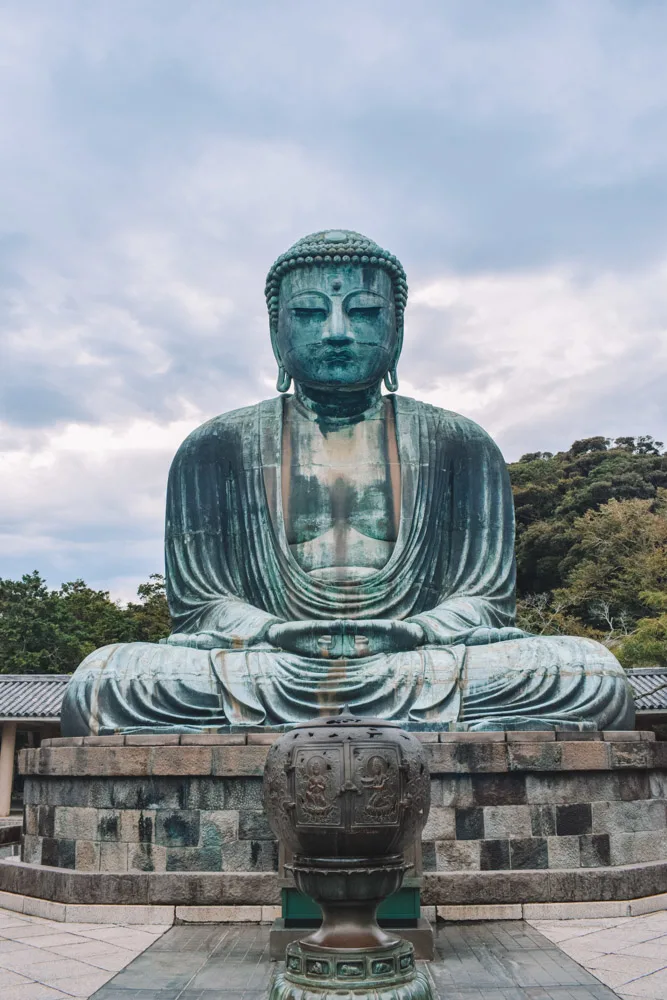
The famous big buddha of Kamakura in Japan
Stop 5: Kamakura Zaimokuza Beach
Entrance fee: Free
Daily opening hours: 9:00 am – 17:00 pm
Before leaving from Kamakura to Tokyo, end off a long day of explorations and new experiences with a bit of sunset chills on the lazy coastline of Kamakura at Zaimokuza Beach. This is one of the musts on my list of Kamakura things to do.
Kamakura’s coast is adorned with some of the most pristine, beautiful beaches, such as:
- Zaimokuza Beach
- Yuigahama Beach
- Inamuragasaki Beach
- Shichirigahama Beach
- and Koshigoe Beach.
Although you can spend your last remaining hours watching the sun go down over the ocean on any one of these majestic beaches, I suggest the sea-bathing spot of Zaimokuza Beach.
This beach has a welcoming, calm sea that’s shallow enough for you to enjoy a dip after your day of Kamakura sightseeing. Through the especially transparent ocean water, you can even see schools of fish and glimmering seashells.
During the sunset, the view from this beach is mesmerising, with a glimpse of Enoshima Island in the distance. This adds to the already spectacular sight of the red-orange tinges over the ocean.
Breathe in as you remember your favourite parts of the day. Then head back to your hotel in Tokyo to rest up after a long day of unforgettable ventures in Kamakura.
For further exploration, go on a tour of Enoshima Island.

Zaimokuza Beach in Kamakura
Final thoughts on the perfect Tokyo to Kamakura day trip
Once you visit Kamakura, your perception of Japan will expand, and you’ll have a better idea of the country’s diverse, colourful history and culture.
This is the perfect getaway for anyone wanting to understand some of the Japanese philosophies and traditions.
There are plenty of historical, beautiful and exciting places to visit in Kamakura, but there’s also a very unique character to the city and that is an experience in itself. It might not be as famous as Kyoto, Osaka or Nara, but it’s definitely a city worth of a visit.
A day trip to Kamakura is a must when in Tokyo, it presents a thrilling escape and adds so much more to your travels in Japan.
I hope that my complete day trip itinerary has given you everything you need to know to have the most incredible time in Kamakura. Be sure to pack your camera for this one, as you’ll want to capture each and every second of your Kamakura travels.
Looking for more Japan travel tips? Check out these guides!
Enjoyed reading about my one day Kamakura itinerary? Pin it!

